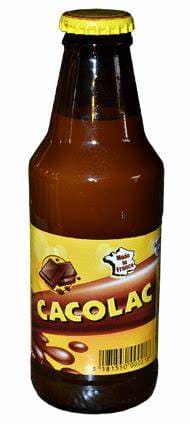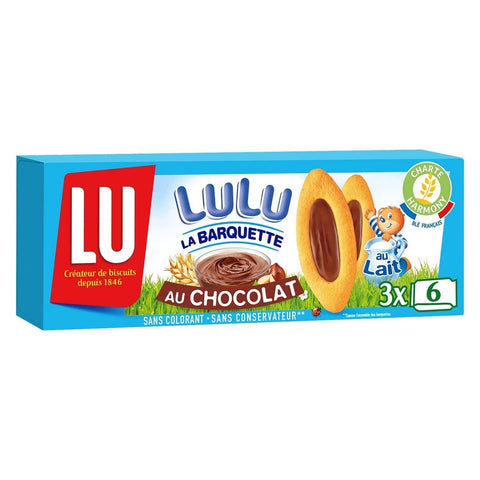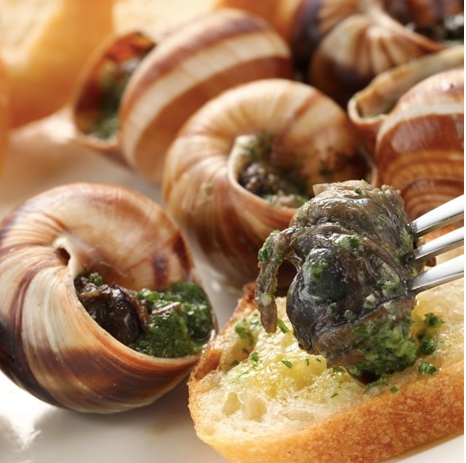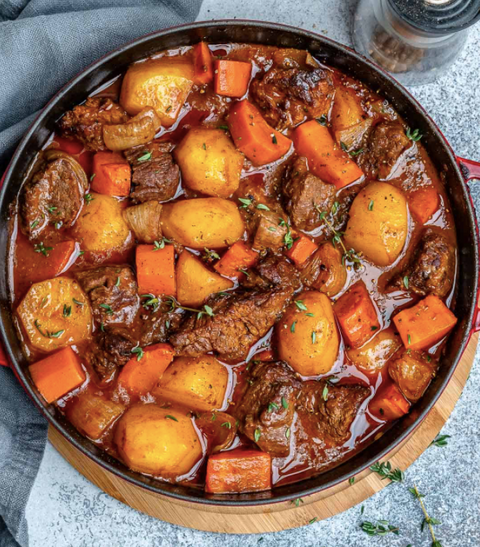The original version of moules Marinières was prepared with garlic, shallots, or leek to the butter used to cook the mussels. It is generally composed of cream, tomatoes, or other ingredients added in some modern recipes.
The "Marinières" part of the name comes from the fact that mussels used to be an important food for sailors — it was easy for them to gather mussels from the rocky shores of Brittany, Normandy, and other coastal regions. The extra ingredients (wine, garlic, etc.) were added later, probably around the 1890s. It became popular with tourists during the Belle Époque period (late 19th century).
Meaning of Moules Marinières
Moules Marinières is a French mussel cooked with white wine, onions, parsley, and other vegetables. The name means "mariner's mussels," a traditional dish eaten by fishermen on their boats.
Traditionally serving Moules Marinières
Moules Marinières are usually served with drawn butter, garlic, broth (or wine), and herbs. In Belgium, frites (French fries) are a popular accompaniment to mussels.
Moules Marinières are eaten with the hands.
- The correct way to eat them is to open the shell and extract the soft flesh contained within. This is done by holding one-half of the shell in a cupped hand.
- A fork or other utensil may be used to pry open the shell if necessary but should not be used for holding the shell when eating out of it.
- Once you have extracted the soft flesh from one shell, leave that half of the shell on your plate and move on to your next mussel. Once all of your mussels have been eaten, use pieces of French bread to soak up any remaining broth in the bottom of your bowl or platter.
What are Moules Pots?
Moule's pots are a type of pottery traditionally used to cook mussels. They have an oval shape with a lid. The lid has holes in it. The pot also has handles and is glazed on the inside and outside.
The pot is made from clay, which is then fired in a kiln at around 1,300°C (2,400°F). The firing gives the pot its hardness and makes it waterproof. Moule’s pots are usually handmade by local craftsmen.
- The product is designed to be used on a stovetop and comes in several sizes. Using the pot is very simple: the mussels are placed inside with broth or white wine and then covered and heated until they open up.
How long should you cook Moules Marinières?
Moules Marinières are easy to cook and take on many flavors well. They're also very quick to prepare. After being cleaned and debearded, they can be steamed in a pot with wine or broth or boiled in a soup. They'll open up within 5-10 minutes of hitting the heat and are done when their shells open. Any that don't open should be discarded before serving.
For a perfect batch of mussels every time, you need to pay attention to two things: how long you cook them and how long you soak them. But first, a warning: throw out any open shells before cooking or don't close after being tapped against the counter. Likewise, if they don't close after being cooked, throw them out as well.
Refrigerating Moules Marinières before cooking
If your Moules Marinières are alive when you buy them, then yes! This is because they store their food and water supply inside their shells when they're busy. But if they're dead, that water supply could be contaminated with harmful bacteria, which can make you sick if you eat it. Tap each shell against a countertop or other hard surface to test whether your mussels are still alive. If the shell doesn't close immediately, then its dead — throw it away!
How do you eat moules Marinières?
Elegant, understated, and romantic, this classic dish is an easy way to impress a date, suggests chef Pascal Aussignac of Club Gascon in London. "Moules are the perfect thing for sharing," he says. "They look good, smell great and taste delicious. They create an instant atmosphere."
- Bring a large pan of salted water to a boil and add your Moules Marinières. Let them cook for 2-3 minutes until they open up.
- Meanwhile, in a separate pan, heat the cream and add the shallots and garlic. Boil gently until the liquid has reduced by half
- Remove the moules from their shells and put them in a bowl with some of the cooking water
- Pour the cream mixture over the mussels and put back on a gentle heat to warm through
- Garnish with chopped parsley and serve with crusty bread
Other food options that goes well with Moules Marinières
Mussels are a versatile food that can be prepared in many ways. When steamed in white wine, they're terrific served with crusty bread, cooked potatoes, or rice to absorb all of the delicious broth. They're savory in a spicy red curry and go well with jasmine rice.
Mussels have a rich, meaty texture and a sweet, salty flavor enhanced with herbs and spices, wine, beer, or spices like saffron. Try to use fresh herbs if you can - but dried is okay if that's what you have on hand. There is so much flavor packed into these little mollusks it is hard not to love them!
What can I use instead of white wine in mussels?
This is a good question because mussels can be very demanding. They will reject any liquid which they decide they won't open up. Some people have had success with beer and white wine vinegar, but even about half of my mussels refused to open up when I cooked them in white wine vinegar.
The best substitute for white wine is an acidic liquid that isn't overly flavored. Fruit juices work well, particularly lemon or lime juice. You can also add some vegetable broth or plain water to the juice to increase the volume of the cooking liquid without adding a flavor that could overpower the delicate taste of the mussels.
Taste of Moules Marinières
If you've never tried Moules Marinières before it's understandable that you might be skeptical. They look like bugs and live in the water — two things that should make any sane person wary of trying to eat them. Then try the recipe given here by bbc co website.
But they're delicious! Moules Marinières are often likened to clams, which is an apt description because they can both taste a little sweet and salty.
- The main difference between the two is that Moules Marinières are much softer and less chewy than clams, and they have a stronger flavor (if you're not sure if you like the taste of seafood, mussels is a great place to start).
- The best way to describe the taste of a Moules Marinières is by comparing it to another type of food. I think most people will agree that mussels taste like an even blend of oysters and scallops. If you've had either one or both of those, then you'll know exactly what to expect from Moules Marinières.

Need to wash Moules Marinières before cooking
People often wonder if they need to wash mussels before cooking them.
- It would be best if you rinsed your mussels (under running water) before cooking them. The reason is that when mussels are harvested from the ocean, they often contain sand and dirt.
- As you're washing your mussels, discard any that do not close when tapped on a countertop. If a mussel does not close, it means its dead and will not be good to eat. You should also discard any open shells after cooking, as these will also be bad.
- Mussels are bivalve mollusks that live in the ocean. They feed by filtering water through their bodies, which means they can absorb toxins and contaminants. But this is only a problem when the water is contaminated. Then, mussels don't need to be washed before cooking in places where the water is clean.
Soaking them in freshwater can cause them to absorb too much water and die before you can cook them. So for best results, scrub the shells with a brush just before cooking and discard any mussels that are open or have broken shells.
Overcooking Moules Marinières
Moules Marinières are among the easiest and most delicious shellfish to cook. We use them in various dishes, from soups and stews to pasta sauces and salads. And we've never run into a single person who doesn't love them.
You might be wondering if it's possible to overcook mussels, but there's no such thing. Even when cooked until the shells split open, they are delicious and tender. If you want them to be more delicate, keep cooking them longer.
Moules Marinières are served with fries
The reason mussels are served with fries because both dishes require the same cooking medium, deep fat frying. The tradition of serving both together likely started from pubs that offered both words on the same menu. Because it's more cost-effective and less labor-intensive to cook them simultaneously, it was an easy decision for cooks to combine these two dishes onto one plate.
The moules frites, the bivalve mollusks steamed and served with broth and French fries, garnished perhaps with parsley and sometimes with a lemon wedge.
The pairing of Moules Marinières with fries may seem curious to first-time visitors to Belgium or France, but it is an established tradition in those countries.
- First, the mussels are steamed with white wine, herbs, and spices, usually shallots and garlic.
- Then, the mussels are served in the broth for dipping.
The fries — or frites or Pommes frites — are also dipped into the broth or mayonnaise.
Best wine to Cook in Moules Marinières
Many people believe that the best wine to cook Moules Marinières in is one you wouldn't want to drink. The opposite is true: the best wine to cook mussels in is one you'd be happy to sip while eating them. You can get help for choosing wine for Moules Marinières from simplyrecipes website.
- Choose a dry white wine that has a medium body and flavor. Sauvignon Blanc, Chardonnay, and Pinot Grigio are all good candidates.
- If you're using a sweeter wine, I recommend adding some acid to balance out the dish. It's worth pointing out that a high-alcohol wine may not work well for this application because alcohol increases evaporation.
Moules Marinières will create their broth, so don't worry about adding too much liquid. Instead, you want just enough liquid so that it almost covers them in the pan (or steamer).
What happens if you eat too many mussels?
If you eat too many mussels, you can have a bad time.
- Eating too many mussels might lead to a condition called paralytic shellfish poisoning (PSP). People with PSP experience symptoms such as numbness and tingling in the lips and tongue, headache, dizziness, nausea, vomiting, diarrhea, and loss of coordination.
- Some people also experience difficulty breathing or muscle paralysis after eating too many mussels.
Thankfully, there are not very many cases of PSP in the world each year. In fact, according to the National Institutes of Health (NIH), shellfish poisoning is rare in the UK. But that doesn't mean it can't happen to you. So you should always be careful about what type of shellfish you are eating and how much of it you are eating.
The best season for Moules Marinières
Mussel season varies based on the species of mussel you are looking for. However, the general rule is that mussels (blue and green-lipped) are at their best from April through August. The best time of year for mussels is from September through April. This is because mussels spawn in the summer, are less plump, and have fewer flavors during this period.
Blue mussels reach maturity in November but are more readily available in supermarkets from April through August. During this time, the meatiest mussels are available for your culinary needs.
Green-lipped mussels have a slightly different season and are typically available from February through September. Green-lipped mussels are much more delicate than blue mussels and do not freeze well, so their season is shorter.
So, Moules Marinières is a French mussel cooked with white wine, onions, parsley, and other vegetables. You must have to try these Moules Marinières from raymondblanc website.








